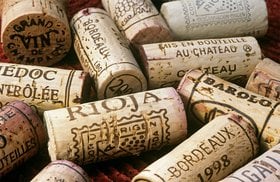How Many Bottles in a Case of Wine (Party Planning, Costs 2025)
Want to find out how many bottles in a case of wine as you get set for your big party?
A standard wine case has 12 bottles of 750 ml each. The price may range from around $100 to several thousand dollars depending on the wine you’re looking for.
So, how many cases will you need in total, and can you mix different wine styles?
In this article, you’ll find out all about this, including how to build a customized wine case. We’ll also show you the different types of wine cases and the pros and cons of buying wine by the case.
We’ll also show you an easy way to invest in a case of fine wines!
Further reading
- Keen to explore wine investment? Start with this Comprehensive Guide for Wine Investment.
- Check out the 17 Other Wine Bottle Sizes Besides the Standard 750ml.
- Discover the Best Types of Wine Racks to Show Off Your Wine Collection.
How Many Bottles in a Case of Wine?
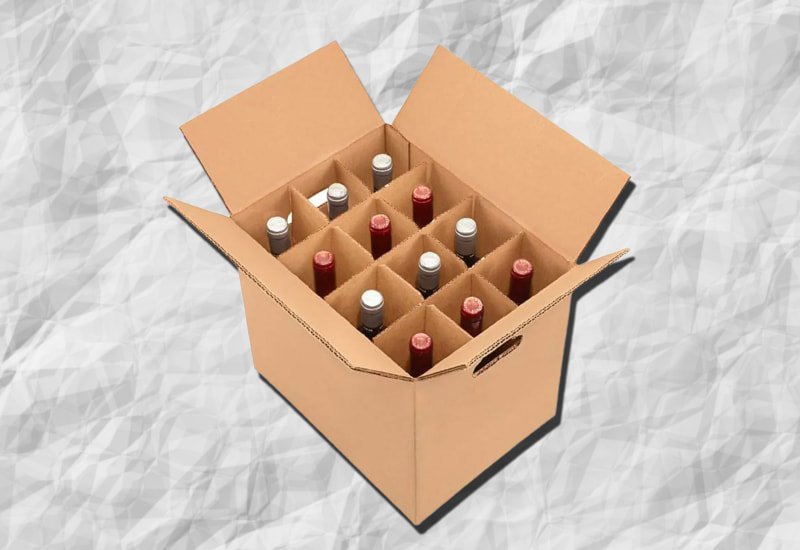
The regular wine bottle size is 750 ml, and a standard case of wine consists of 12 bottles. This makes a total of 9 liters of wine in a single case.
So, how many wine glasses are in a case of wine?
A standard wine bottle contains about five glasses of wine. A typical serving or glass of wine is 5 ounces. So, a case will have around 60 wine servings.
Once you know the number of servings in a case, it’s easier to decide the number of wine cases you’ll need for your dinner party or celebration.
But if you’re buying wine in bulk, you might also want to know:
How Many Gallons Is a Case of Wine?

A traditional 9-liter case converts to 2.3 gallons of wine. But usually, wine capacity is expressed in liter units. So, if you prefer gallon measurements, you just have to multiply the liter capacity by 0.264.
How Many Cases of Wine in a Barrel and a Pallet?

A barrel can hold 25 cases of wine. This is approximately 300 glass bottles or about 1,500 glasses of wine. Probably enough alcohol for quite a few parties!
A pallet of wine contains about 56 cases, which equates to 672 bottles of wine or 3,375 glasses.
However, if you decide to stock up lots of bottles or cases, make sure you have a proper wine cellar with optimal storage conditions!
Let’s now see how many cases you should stock up before throwing a dinner party.
How Many Cases Should You Buy for a Party?
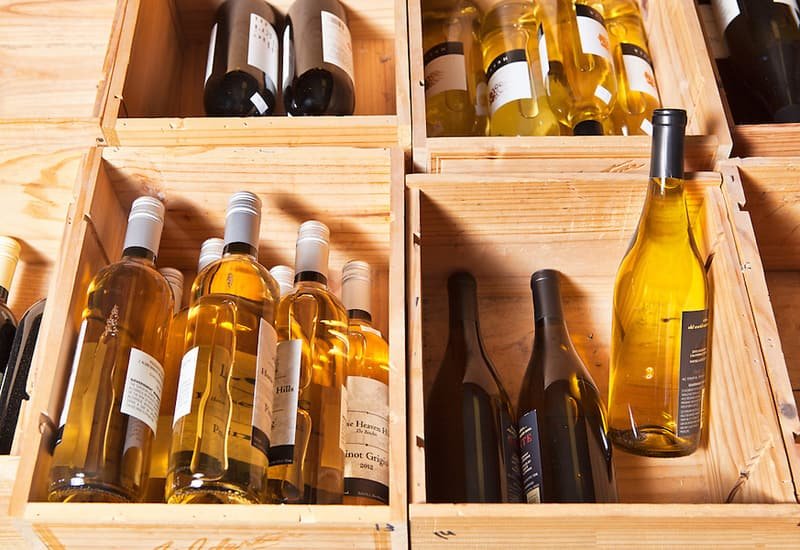
It may seem tough to predict how many wine glass servings your guests would drink after your Champagne toast and how many wine cases you should stock up on!
You can calculate an estimate by multiplying:
- The number of guests
- The duration of the party in hours
- The number of glasses consumed per hour
For example, if you host a 3-hour party for 50 guests and assume that one wine glass is served per guest per hour, the total number of glasses required is:
50 guests x 3 hours x 1 glass/hour = 150 glasses
Since each standard bottle holds five glasses of wine, just divide your answer by 5. This gives you 30 glass bottles of wine.
To cater to each red and white wine lover impartially, simply split the number into two, and serve 15 bottles each of whites and reds.
But did you know that wine comes in different bottle shapes and sizes?
Other Bottle Sizes and Shapes
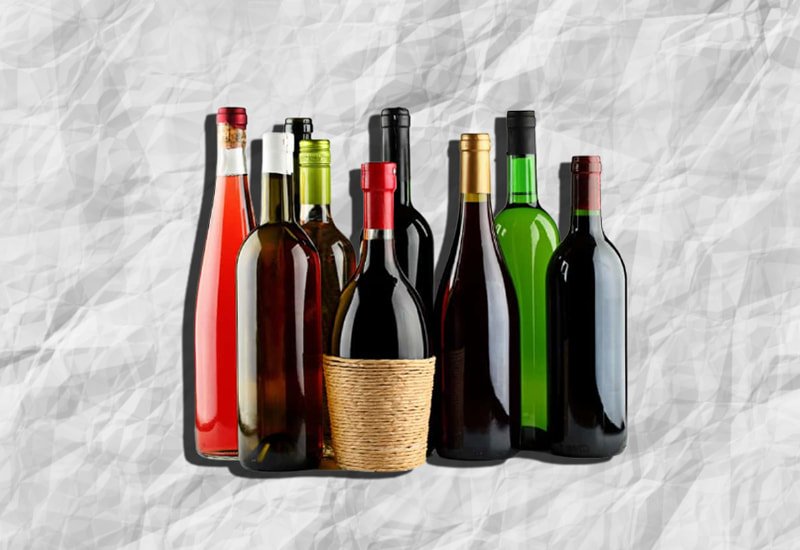
Depending on the winery and the winemaking style, you’d find different wine bottle sizes in the market.
For example, while Pinot Noir is seldom sold in large format bottles, Champagne is often available in bigger-sized bottles.
A few other different wine bottle sizes besides the 750 ml bottle are:
Ever notice the fascinating bottle shape of some wines when you’re out shopping for alcohol?
Interestingly, wine and other liquor are sometimes available in unique bottle shape styles like these as well:
- Alsace bottle
- Bordeaux bottle
- Burgundy bottle
- Champagne bottle
- Port bottle
- Provence bottle, and so on.
In addition to wine, you can also buy other liquor like whiskey, vodka, and even craft beer by the case. But the number of bottles may vary. For instance, a case of craft beer contains 24 bottles of 350 ml each.
But did you know that not all wine cases are the same?
Let’s explore the different types of wine cases you can choose from.
Different Types of Wine Cases

Depending on the wine bottle size in a case, there are two more types of wine cases besides the standard one with 12 bottles of the same wine:
- 6-bottle case: If you prefer large format bottles instead of the standard 750ml bottle, you can buy a bottle case containing 6 magnum bottles (1.5 liters or 0.4 gallon.) Some standard size wines are also available in such cases.
- Mixed 12-bottle case: A mixed bottle case consists of 12 standard-sized bottles. However, the case could contain different wine styles of your choice.
So, if you decide to build a mixed case, how do you go about doing it?
Read on.
How To Build A Mixed Case

If you’re a wine enthusiast looking to build a mixed case, a good rule of thumb is to select different wine styles and grape varieties. Make sure the customized case offers something for every palate.
Choose five bottles of white and red wine each to build such a case. Include some bold, vibrant wines (a California wine like Cabernet Sauvignon or a French Malbec) as well as lighter, delicate ones (sweet wine like Riesling or flavorful Moscato). Don’t forget to include two bottles of sparkling wine as well!
If you’re bored of popular varieties like Merlot or Chardonnay, mix things up by adding more sparkling wine bottles or exotic white wine blends like Gewurztraminer to your wine case.
Let’s find out how much you need to shell out to buy a case of wine.
How Much Does a Case of Wine Cost?

A case of wine may start from around $50 and go up to a few thousand dollars, depending on the wine you choose.
When you make a mixed wine case, these are the types of wine that could go in each cost bracket:
- Around $100:You can get a full case of budget-friendly wines at an average bottle cost of under $10 per standard wine bottle. These are usually flavorful, youthful, and easy-to-drink party wines, such as some Napa Valley Pinot Noirs and Malbecs.
- Around $150: If you spare a bit more money, you can opt for some inexpensive white wine bottles and certain bulk-produced reds in a customized case. The low-cost wines in this price range are pretty enjoyable and of good quality. These could be Pinot Grigios, Chilean Chardonnays, or even Pinot Noirs if you can find a moderately priced bottle.
- Around $200: In this price range, you can afford higher-quality wines. You can add some Petite Sirah red wine blends, Vinho Verde whites, a sweet wine like Sauternes, and even some Pinot Noir bottles.
Be sure to select wines from lesser known regions as well - these would be less expensive and will provide the best price-quality ratio.
- Around $300: As the price per bottle in this range is around $25, you can now move on to some good quality wines. Opt for a mixed case of new world wines and classics like Tempranillo blends with an addictive fruit aroma and delicate structure.
- Around $500: If you’re interested in fine wines from the best wine regions like Bordeaux or Napa, this price range can be your starting point. With standard bottle prices at about $30, you can savor some great wines from renowned vineyard estates or young wines from more popular regions.
- Above $500: You can get your hands on exceptional fine wines such as Brut Champagne or Chablis Chardonnay if you’re willing to stretch beyond $500. A per bottle price of $50 and above opens up the market of well-aged premium vintages and even large format bottles.
But before you set off to build an exceptional wine case, let’s quickly go through the advantages and disadvantages of buying wines by the case.
Pros and Cons of Buying Wine by the Case
Here are some of the pros and cons of buying wine cases:
1. Pros
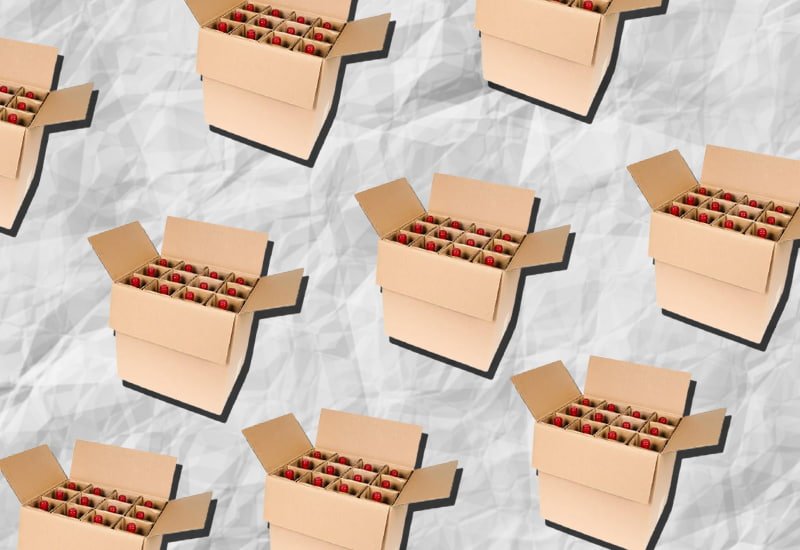
Buying wine by the case is a great idea since it is:
- Cost-effective: If you buy wine by the case, you’ll get a 10-15% case discount from some retailers.
- Ideal for big events: When you need to cater to many wine drinker guests at major events like a wedding or dinner party, bulk buying is always better.
That’s because each party-goer has different wine preferences. So, with a mixed case, you’ll be able to keep all your guests happy!
- Great for revealing the wine’s aging potential: If you’re planning on storing your wine cases for the long term, you can open a bottle every few months. This is a great way to examine how the wine’s flavor profile and fruit aroma notes evolve over time - especially for age-worthy vintages from coveted vineyard sites in Bordeaux and Burgundy.
- Convenient: With a wine case, you’ll have sufficient stock at home, so you can pop a bottle open anytime. You won’t have to rush to the local wine shop at the last minute before your party.
2. Cons

Keep in mind these disadvantages before you purchase your case of wine:
- Impulsive purchase: Buy cases of wine only after you’ve trained your palate. Avoid impulsive buying - for example, when you’re in an alcohol-induced high after a winery tour!
An impulsive purchase of wine cases could also prove to be a mistake after a few years when your taste has evolved and you need something better.
It’s almost like buying a cocktail dress and your host suddenly decides to change the theme of the cocktail party, or like joining a wine club on a whim.
- Unsuitable cellar conditions: Wine cases contain several wine bottles. So, you should set up a cellar with optimum wine storage conditions before buying a case so the wine doesn’t go bad over time.
Now:
If you want to buy a more affordable wine case, you can do that at your local wine shop.
But, if you're aiming to buy a case of high-end investment-grade wines, then you should buy them through a professional wine investment company like Vinovest.
Buy Collectible Wines Through Vinovest

Vinovest is an AI-basedwine investment platform that helps you build a high-performance portfolio of fine wines that often outrank the market.
You can buy, store, and sell your wines and have them delivered to you or your buyer when the time is right.
Does Vinovest Buy Wines by the Case?
To ensure safety, authenticity, and the best possible market value for every wine bottle, Vinovest usually buys wine by the case. Custom-made cases for most investment-grade wines increase the resale value of each wine bottle significantly. On the contrary, buying individual bottles might drive down the wine’s value.
However, if there’s a good investment opportunity, Vinovest lets you buy individual bottles as well.
So, how can you begin investing through Vinovest?
How Does It Work?
- Sign up with Vinovest.
- Help them understand your investment style by answering a simple questionnaire.
- Maintain a minimum balance of $1,000 in your account.
- Based on your answers, Vinovest will build a customized wine portfolio that suits your preferences - as you sip a wine glass of Chardonnay!
Benefits
Vinovest also offers a range of advantages to any wine lover or investor on their platform:
- Easy Buying and Selling Using AI-driven Technology: Vinovest’s Artificial Intelligence-driven platform facilitates the easy purchase and sale of wines worldwide, whether that’s a California wine bottle, a coveted Champagne bottle, or an aged Cabernet Sauvignon.
- Best Prices: Rest assured that you’ll buy wines only at the most reasonable rates. That’s because Vinovest buys authentic wines from trusted winemakers, wine exchanges, and wine merchants, and helps you avoid retailer mark-ups.
- Curated Portfolio by an Expert Wine Advisory Team: Don’t fret if you aren’t a wine expert. The team of expert sommeliers and data scientists at Vinovest will guide you through the steps of building your fine wine portfolio.
Vinovest also provides updates about upcoming wine auctions for you to participate in and not miss any opportunity to make some extra gains.
- Optimal Storage and Safety: Vinovest stores your wines in bonded warehouses that maintain optimal temperature, light, humidity, and vibration levels.
You get easy access to a premium wine cellar without the headache of maintaining it yourself.
- Comprehensive Insurance and Security: You get a full insurance policy at market value.
Vinovest’s storage facilities are under round-the-clock surveillance cameras that keep watch over your wines. These facilities also have power backup systems that maintain ideal conditions even during a power outage.
- Low Overall Costs:Will all these high-end services burn a hole in your pocket?
Vinovest only charges an annual fee of 2.5% (or 1.9% for portfolios of over $50,000). This fee covers wine purchase and sale, wine fraud detection, storage, insurance, and management of your portfolio.
- Tax Advantages: The premium storage facilities do not charge excise duty and VAT, so the tax benefit is passed on to you.
Build Your Own Customized Case of Exquisite Wines Today!
Next time you’ve to organize a party, you don’t have to fret over how many bottles or cases to buy. With this guide, you can be well prepared with the perfect number of cases before your Champagne toast.
Remember to show off the best bottles in your wine racks!
And if you want to invest in a wine case of age-worthy, sought-after wines, sign up with Vinovest and start building your wine portfolio today!


